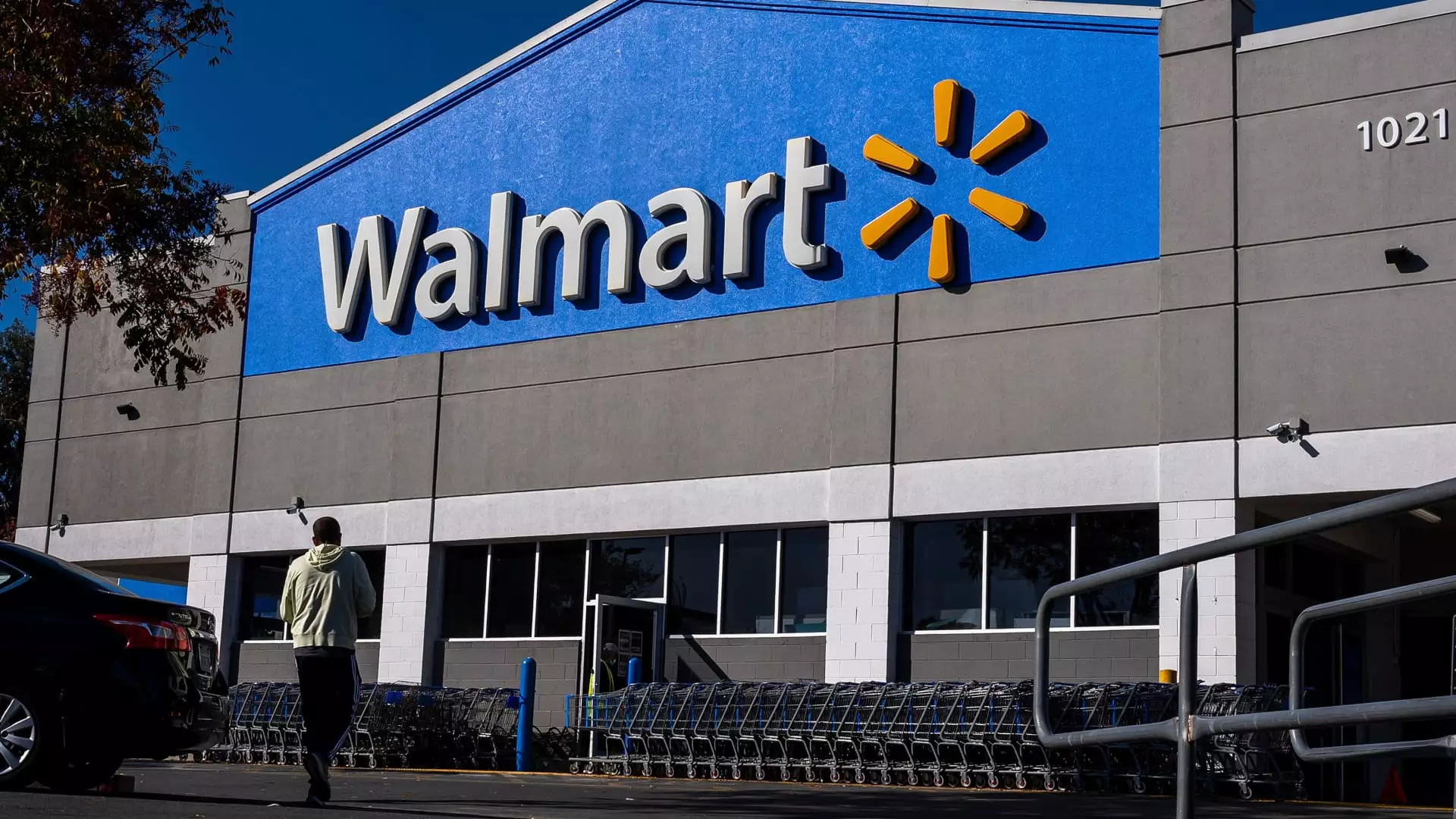Walmart, the retail giant synonymous with affordable shopping, found itself facing a turbulent phase when its shares dropped by more than 5% in premarket trading. This decline stemmed from the company’s forecast of a slowdown in profit growth for the upcoming fiscal year, despite a notable uptick in sales. Such fluctuations in the stock market reflect a complex relationship between corporate performance indicators and investor sentiment, highlighting how expectations can impact stock valuations significantly.
The company’s announcement of fiscal projections was meant to reassure stakeholders, but it instead conveyed caution. Walmart projected a net sales growth of only 3% to 4%, alongside anticipated adjusted operating income growth of 3.5% to 5.5%. This tempered outlook raised eyebrows among analysts, as it signaled a marked shift from the more robust growth seen in previous years, prompting investors to reassess their confidence in Walmart’s ongoing expansion strategy.
Walmart’s holiday-quarter results revealed a paradox: while e-commerce sales surged by 20% in the United States, traditional metrics of growth were not aligned with these digital profits. The retailer reported a revenue increase of approximately 4%, which included a notable shift in consumer behavior that favored online shopping and store pickups. Nevertheless, these advancements do not completely mitigate the concern over overall profit trajectory.
For the most recent fiscal year, Walmart achieved a commendable 9.6% growth in adjusted operating income when measured on a constant currency basis. However, the forecast for adjusted earnings per share, set between $2.50 and $2.60, fell short of Wall Street’s expectations of $2.76. This misalignment likely fueled investor unease, given that financial predictions serve as a beacon for future performance.
In a recent interview, Walmart’s Chief Financial Officer, John David Rainey, characterized consumer spending as “steady,” though he also acknowledged the opaque nature of current geopolitical conditions. This cautious optimism raises questions about potential external factors that could influence consumer trends. Notably, Walmart sources approximately two-thirds of its products domestically, which may both shield and expose the company to economic upheaval, such as tariffs imposed on imports from neighboring countries like Mexico and Canada.
Rainey’s statements about the tariff landscape indicate that while Walmart has navigated fluctuating trade policies for several years, upcoming tariff implementations could disrupt their operational efficiency. He noted that the company has contingency plans in place, including leveraging internal brands and adjusting supply sources to minimize cost implications. The uncertainty in the tariff environment underscores the unpredictability that major retailers must contend with in the current global economy.
Walmart’s reported fourth-quarter earnings illuminated the complex nature of retail health. Earnings per share figures showed a reduction from last year, diminishing from $5.49 billion to $5.25 billion. Although this decrease might raise alarms, it’s essential to view these figures alongside indicators of increased consumer engagement, such as a 4.6% rise in comparable sales within the U.S. and a 20% surge in e-commerce. Such data can provide reassurance that consumer habits are shifting, not failing.
Additionally, Walmart’s proactive measures, including diversifying its services through their advertising business and third-party market sales, show a clear intention to adapt and thrive in an evolving retail landscape. These segments are not yet on par with market leaders like Amazon but have demonstrated promising growth. It’s indicative of a strategy that emphasizes higher margins and innovative offerings, suggesting that Walmart is keenly aware of and responsive to market dynamics.
While Walmart is contending with a challenging economic forecast that has rattled investor confidence, its underlying business strategies boast resilience. The company is adept at leveraging its e-commerce capabilities and diversifying revenue streams to adapt to shifting consumer preferences. Although imminent challenges such as tariffs loom large, Walmart’s seasoned leadership and innovative approaches may well position it to navigate these hurdles successfully.
As the market continues to react to Walmart’s evolving strategies, stakeholders will undoubtedly keep a close watch on how the retail titan balances short-term setbacks with long-term growth aspirations. In this regard, news from Walmart will serve not just as company updates but significant barometers reflecting broader consumer sentiments and economic health.

